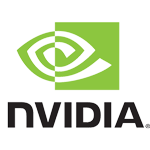NVIDIA has shown its new GPU GP104 dedicated to enthusiast gamers, and our pal Michele will write a deep technical analysis on it during the next hours for sure.

What I want to point out now, are some questions not answered by the CEO of NVIDIA, Jen-Hsun Huang, during the conference.
1) Today JHH has not spoken about DX12 Pascal features improvements, so we can presume that DX12 “Resource-Binding” Tier will be the same of Maxwell 2.0: Tier 2. And, what about Async Shaders support? Latest rumors talked about like-GCN 1.0 support. But the real question is: what about the "Resource Heap" tier (One of the most innovative features integrated in DX12.0)? Maxwell 2.0 has Tier 1, and it's sad because the latest GCN AMD cards and even Gen 9 GPUs of Intel are Tier 2.
2) Pascal cards will continue to use SLI Bridge, instead of PCI-E (Like AMD), for Multi-GPUs configurations. This means worse latency and worse Bandwidth than AMD Hawaii/Granada and Fiji GPUs (XDMA). Since the VR dedicated configurations need low latencies and bigger Bandwidth, the GTX1070 and GTX1080 cards could be still unable to support a nice advanced VR experience (AFR/SFR, 4K resolution). It seems an unbalanced GPU, just like AMD Fiji is.
3) The 256 Bit memory bus could be a problem for higher resolutions (1440p or better) than FullHD. GP104 is technically a powerful GPU, but this Bus could limit the GTX1080 with these resolutions. It seems that GTX1080 will be able to well handle - during the next years - just the FullHD resolution. So, the GDDR5X memories seem to be a useless update, due to the tiny memory Bus. The GTX1070 is the real GP104 must have.
4) JHH talked about the incredible performance of GTX1080 card and the terrific overclocks you can achieve … but the GTX1080 (2560 Cuda Cores, Bus 256 Bit) is just 20-25% better than a GTX980Ti (2816 Cuda Cores, Bus 384 Bit) in Directx 11 games, despite a +60% GPU frequency, according NVIDIA slides. This reminds me to Bulldozer CPUs release, when FX processors were slower that Phenom II processors in clock-to-clock comparisons. However, we have to wait for the first review to know better the reality.
| Graphic Card | CUDA Cores | Boost Clock | TFLOPs | GFLOPs/Core/MHz |
| GTX 680 (Kepler) |
1536 | 1058 Mhz | 3 | 1.846 |
| GTX 780 Ti (Big Kepler) |
2880 | 928 Mhz | 5 | 1.870 |
| GTX 980 (Maxwell 2.0) | 2048 | 1216 MHz | 5 | 2.008 |
| GTX 1080 (Pascal) | 2560 | 1733 MHz | 9 | 2.029 |
Source: Anandtech
5) Last, but not least, the GDDR5X question: how can NVIDIA sell GTX1080 cards by now, if Micron has not started GDDR5X mass production? It will begin during this summer, according Micron official doc: “Micron’s GDDR5X program is in full swing and first components have already completed manufacturing. We plan to hit mass production this summer”. Will NVIDIA use pre-production samples, like it’s doing with P100 cards, equipped with pre-production HBM2 chips? Low availability, but the cards are essentially on the market. So, NVIDIA users can say that it's not a paper launch, even the cards will be out-of-stock almost every time. This is a good tactic, because NVIDIA can say that it's a best seller. Marketing at its best, and NVIDIA is the Master of marketing tactics in IT industry (It's not an accusation, but a fact).
